Question: 1. Develop a Preventive Program based on the scenario. Background Brad is 32 year old male. He was cooking methamphetamine in his kitchen when the substance caught on fire at 2300. The entire house was engulfed in flames when the fire department arrived on scene. The neighbor called 911 when he smelt smoke. Brad was found unconscious by the firefighters and was pulled out. He was stabilized on scene and was rushed to West Hills ED via ambulance. While enroute, the paramedics started an 18 gauge IV in the right C and had Brad on 100% O2 non-rebreather. Paramedics alerted ED of an estimated ETA of 5 minutes. Upon arrival at the ED, Brad was found to have stage 3 burn wounds on his anterior and posterior torso and entire left arm with stage 2 burns on his anterior neck. Brad was at risk for smoke inhalation and a compromised airway, so RT intubated him and fluid resuscitation was initiated. En Route to Emergency Department Paramedics alerted the emergency department of incoming arrival at 2350 and gave an estimated time of arrival of 10 minutes. Vital signs were as follows: blood pressure of 92/58, heart rate of 112, oxygen saturation of 91% respiratory rate of 22, and a temperature of 97.4°F. During transportation an 18 gauge IV was started in right AC and 1 liter of Lactated Ringers (LR) was administered. A non-rebrether O2 applied on 100% and 15 L to achieve a saturation of 93%. HIs reported weight in the ED was 75 kg, and a body surface area of 2.0 m2. Emergency Department Assessment Findings Per the advanced trauma assessment, using the ABCDE format, the following was noted at 0000: • Airway- Brad’s airway is compromised and RT placed an endotracheal tube • Breathing- Crackles were heard bilateral upon auscultation • Circulation- Thready pulses in all four extremities • Disability- Brad was unable to move left arm and upper body. His neck was beings stabilized until cervical injury was ruled out • Examine – associated injuries and maintain warm environment- Nurse increased ED room temperature to 90°F Further Assessment of Brad Revealed the following findings and interventions: • Rule of Nines: 27% of Brad’s body was burnt (anterior and posterior torso, entire left arm, and anterior neck) • Fluid Resuscitation: administration of LR • Pain Medication – 1 mg IV dilaudid for pain • Initial Labs – Pending (drew CBC, chem panel, lactic, toxicology screen [also got a urinalysis]) • Ruled out cervical spine injury • Additional nursing Interventions that occurred in the ED were the placement of a second IV – a 20 gauge in right foot, a second liter of LR was hung, and a foley catheter was inserted Burn ICU Brad was transferred to the Burn Intensive Care Unit (BICU) at 0030, where fluid resuscitation was continued. At this time Brad had already received 2 bags of LR. The formula used to determine the total fluid is as follows: (1,500 mL/m2) + [(25 + % TBSA burned) x (m2 x 24)] = total maintenance fluid (mL) to be given over 24 hours. (1,500 mL/2.0) + [(25 + 27% TBSA) x (2.0 x 24) = (750) + [52 x 48] +750 + 2,496 = 3,246 mL to be given over 24 hours for fluid resuscitation at a rate of 270.5 mL/hr. Urine output is the gold standard for monitoring fluid resuscitation. An adult male should have an output of 0.5-1.0 mL/kg/hr. Brad is 75 kg; this would equate to 0.5-1.0 mL/75/hr = 37.5-75 mL/hr of urine output. Urine output during first hour in the BICU was 20 mL/hr. HR was 130 bpm, BP 96/60, and labs related to fluid resuscitation status are: elevated lactate of 3 mmol/L, and K of 5.5. These signs and symptoms indicated the need for increased fluid resuscitation. After increasing the hourly rate of the Lactated Ringer’s infusion, urine output during 3rd and 4th hour increased to 60 mL/hr, HR lowered to 90 bpm, an BP stabilized to 124/86. Further care in the BICU included burn dressings for coverage until surgical interventions, hourly vital signs, and continuous pain management via a morphine drip. Inhalation injury was ruled out after a bronchoscopy was performed. Signs of respiratory distress (increased RR, tachycardia, wheezing/hoarseness, increased work of breathing) were continuously monitored. An NG tube was placed to suction to prevent aspiration.
Question: 1. Develop a Preventive Program based on the scenario. Background Brad is 32 year old male. He was cooking methamphetamine in his kitchen when the substance caught on fire at 2300. The entire house was engulfed in flames when the fire department arrived on scene. The neighbor called 911 when he smelt smoke. Brad was found unconscious by the firefighters and was pulled out. He was stabilized on scene and was rushed to West Hills ED via ambulance. While enroute, the paramedics started an 18 gauge IV in the right C and had Brad on 100% O2 non-rebreather. Paramedics alerted ED of an estimated ETA of 5 minutes. Upon arrival at the ED, Brad was found to have stage 3 burn wounds on his anterior and posterior torso and entire left arm with stage 2 burns on his anterior neck. Brad was at risk for smoke inhalation and a compromised airway, so RT intubated him and fluid resuscitation was initiated. En Route to Emergency Department Paramedics alerted the emergency department of incoming arrival at 2350 and gave an estimated time of arrival of 10 minutes. Vital signs were as follows: blood pressure of 92/58, heart rate of 112, oxygen saturation of 91% respiratory rate of 22, and a temperature of 97.4°F. During transportation an 18 gauge IV was started in right AC and 1 liter of Lactated Ringers (LR) was administered. A non-rebrether O2 applied on 100% and 15 L to achieve a saturation of 93%. HIs reported weight in the ED was 75 kg, and a body surface area of 2.0 m2. Emergency Department Assessment Findings Per the advanced trauma assessment, using the ABCDE format, the following was noted at 0000: • Airway- Brad’s airway is compromised and RT placed an endotracheal tube • Breathing- Crackles were heard bilateral upon auscultation • Circulation- Thready pulses in all four extremities • Disability- Brad was unable to move left arm and upper body. His neck was beings stabilized until cervical injury was ruled out • Examine – associated injuries and maintain warm environment- Nurse increased ED room temperature to 90°F Further Assessment of Brad Revealed the following findings and interventions: • Rule of Nines: 27% of Brad’s body was burnt (anterior and posterior torso, entire left arm, and anterior neck) • Fluid Resuscitation: administration of LR • Pain Medication – 1 mg IV dilaudid for pain • Initial Labs – Pending (drew CBC, chem panel, lactic, toxicology screen [also got a urinalysis]) • Ruled out cervical spine injury • Additional nursing Interventions that occurred in the ED were the placement of a second IV – a 20 gauge in right foot, a second liter of LR was hung, and a foley catheter was inserted Burn ICU Brad was transferred to the Burn Intensive Care Unit (BICU) at 0030, where fluid resuscitation was continued. At this time Brad had already received 2 bags of LR. The formula used to determine the total fluid is as follows: (1,500 mL/m2) + [(25 + % TBSA burned) x (m2 x 24)] = total maintenance fluid (mL) to be given over 24 hours. (1,500 mL/2.0) + [(25 + 27% TBSA) x (2.0 x 24) = (750) + [52 x 48] +750 + 2,496 = 3,246 mL to be given over 24 hours for fluid resuscitation at a rate of 270.5 mL/hr. Urine output is the gold standard for monitoring fluid resuscitation. An adult male should have an output of 0.5-1.0 mL/kg/hr. Brad is 75 kg; this would equate to 0.5-1.0 mL/75/hr = 37.5-75 mL/hr of urine output. Urine output during first hour in the BICU was 20 mL/hr. HR was 130 bpm, BP 96/60, and labs related to fluid resuscitation status are: elevated lactate of 3 mmol/L, and K of 5.5. These signs and symptoms indicated the need for increased fluid resuscitation. After increasing the hourly rate of the Lactated Ringer’s infusion, urine output during 3rd and 4th hour increased to 60 mL/hr, HR lowered to 90 bpm, an BP stabilized to 124/86. Further care in the BICU included burn dressings for coverage until surgical interventions, hourly vital signs, and continuous pain management via a morphine drip. Inhalation injury was ruled out after a bronchoscopy was performed. Signs of respiratory distress (increased RR, tachycardia, wheezing/hoarseness, increased work of breathing) were continuously monitored. An NG tube was placed to suction to prevent aspiration.
Phlebotomy Essentials
6th Edition
ISBN:9781451194524
Author:Ruth McCall, Cathee M. Tankersley MT(ASCP)
Publisher:Ruth McCall, Cathee M. Tankersley MT(ASCP)
Chapter1: Phlebotomy: Past And Present And The Healthcare Setting
Section: Chapter Questions
Problem 1SRQ
Related questions
Question
Question:
1. Develop a Preventive Program based on the scenario.
Background
Brad is 32 year old male. He was cooking methamphetamine in his kitchen when the substance caught on fire at 2300. The entire house was engulfed in flames when the fire department arrived on scene. The neighbor called 911 when he smelt smoke. Brad was found unconscious by the firefighters and was pulled out. He was stabilized on scene and was rushed to West Hills ED via ambulance. While enroute, the paramedics started an 18 gauge IV in the right C and had Brad on 100% O2 non-rebreather. Paramedics alerted ED of an estimated ETA of 5 minutes. Upon arrival at the ED, Brad was found to have stage 3 burn wounds on his anterior and posterior torso and entire left arm with stage 2 burns on his anterior neck. Brad was at risk for smoke inhalation and a compromised airway, so RT intubated him and fluid resuscitation was initiated.
En Route to Emergency Department
Paramedics alerted the emergency department of incoming arrival at 2350 and gave an estimated time of arrival of 10 minutes. Vital signs were as follows: blood pressure of 92/58, heart rate of 112, oxygen saturation of 91% respiratory rate of 22, and a temperature of 97.4°F. During transportation an 18 gauge IV was started in right AC and 1 liter of Lactated Ringers (LR) was administered. A non-rebrether O2 applied on 100% and 15 L to achieve a saturation of 93%. HIs reported weight in the ED was 75 kg, and a body surface area of 2.0 m2.
Emergency Department Assessment Findings
Per the advanced trauma assessment, using the ABCDE format, the following was noted at 0000:
• Airway- Brad’s airway is compromised and RT placed an endotracheal tube
• Breathing- Crackles were heard bilateral upon auscultation
• Circulation- Thready pulses in all four extremities
• Disability- Brad was unable to move left arm and upper body. His neck was beings stabilized until cervical injury was ruled out
• Examine – associated injuries and maintain warm environment- Nurse increased ED room temperature to 90°F
Further Assessment of Brad Revealed the following findings and interventions:
• Rule of Nines: 27% of Brad’s body was burnt (anterior and posterior torso, entire left arm, and anterior neck)
• Fluid Resuscitation: administration of LR
• Pain Medication – 1 mg IV dilaudid for pain
• Initial Labs – Pending (drew CBC, chem panel, lactic, toxicology screen [also got a urinalysis])
• Ruled out cervical spine injury
• Additional nursing Interventions that occurred in the ED were the placement of a second IV – a 20 gauge in right foot, a second liter of LR was hung, and a foley catheter was inserted
Burn ICU
Brad was transferred to the Burn Intensive Care Unit (BICU) at 0030, where fluid resuscitation was continued. At this time Brad had already received 2 bags of LR. The formula used to determine the total fluid is as follows:
(1,500 mL/m2) + [(25 + % TBSA burned) x (m2 x 24)] = total maintenance fluid (mL) to be given over 24 hours. (1,500 mL/2.0) + [(25 + 27% TBSA) x (2.0 x 24) = (750) + [52 x 48] +750 + 2,496 = 3,246 mL to be given over 24 hours for fluid resuscitation at a rate of 270.5 mL/hr.
Urine output is the gold standard for monitoring fluid resuscitation. An adult male should have an output of 0.5-1.0 mL/kg/hr. Brad is 75 kg; this would equate to 0.5-1.0 mL/75/hr = 37.5-75 mL/hr of urine output. Urine output during first hour in the BICU was 20 mL/hr. HR was 130 bpm, BP 96/60, and labs related to fluid resuscitation status are: elevated lactate of 3 mmol/L, and K of 5.5. These signs and symptoms indicated the need for increased fluid resuscitation. After increasing the hourly rate of the Lactated Ringer’s infusion, urine output during 3rd and 4th hour increased to 60 mL/hr, HR lowered to 90 bpm, an BP stabilized to 124/86. Further care in the BICU included burn dressings for coverage until surgical interventions, hourly vital signs, and continuous pain management via a morphine drip. Inhalation injury was ruled out after a bronchoscopy was performed. Signs of respiratory distress (increased RR, tachycardia, wheezing/hoarseness, increased work of breathing) were continuously monitored. An NG tube was placed to suction to prevent aspiration.
Expert Solution
This question has been solved!
Explore an expertly crafted, step-by-step solution for a thorough understanding of key concepts.
This is a popular solution!
Trending now
This is a popular solution!
Step by step
Solved in 2 steps

Recommended textbooks for you
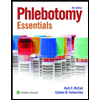
Phlebotomy Essentials
Nursing
ISBN:
9781451194524
Author:
Ruth McCall, Cathee M. Tankersley MT(ASCP)
Publisher:
JONES+BARTLETT PUBLISHERS, INC.
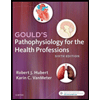
Gould's Pathophysiology for the Health Profession…
Nursing
ISBN:
9780323414425
Author:
Robert J Hubert BS
Publisher:
Saunders

Fundamentals Of Nursing
Nursing
ISBN:
9781496362179
Author:
Taylor, Carol (carol R.), LYNN, Pamela (pamela Barbara), Bartlett, Jennifer L.
Publisher:
Wolters Kluwer,

Phlebotomy Essentials
Nursing
ISBN:
9781451194524
Author:
Ruth McCall, Cathee M. Tankersley MT(ASCP)
Publisher:
JONES+BARTLETT PUBLISHERS, INC.

Gould's Pathophysiology for the Health Profession…
Nursing
ISBN:
9780323414425
Author:
Robert J Hubert BS
Publisher:
Saunders

Fundamentals Of Nursing
Nursing
ISBN:
9781496362179
Author:
Taylor, Carol (carol R.), LYNN, Pamela (pamela Barbara), Bartlett, Jennifer L.
Publisher:
Wolters Kluwer,
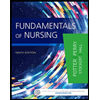
Fundamentals of Nursing, 9e
Nursing
ISBN:
9780323327404
Author:
Patricia A. Potter RN MSN PhD FAAN, Anne Griffin Perry RN EdD FAAN, Patricia Stockert RN BSN MS PhD, Amy Hall RN BSN MS PhD CNE
Publisher:
Elsevier Science
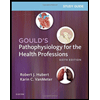
Study Guide for Gould's Pathophysiology for the H…
Nursing
ISBN:
9780323414142
Author:
Hubert BS, Robert J; VanMeter PhD, Karin C.
Publisher:
Saunders
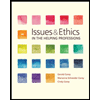
Issues and Ethics in the Helping Professions (Min…
Nursing
ISBN:
9781337406291
Author:
Gerald Corey, Marianne Schneider Corey, Cindy Corey
Publisher:
Cengage Learning